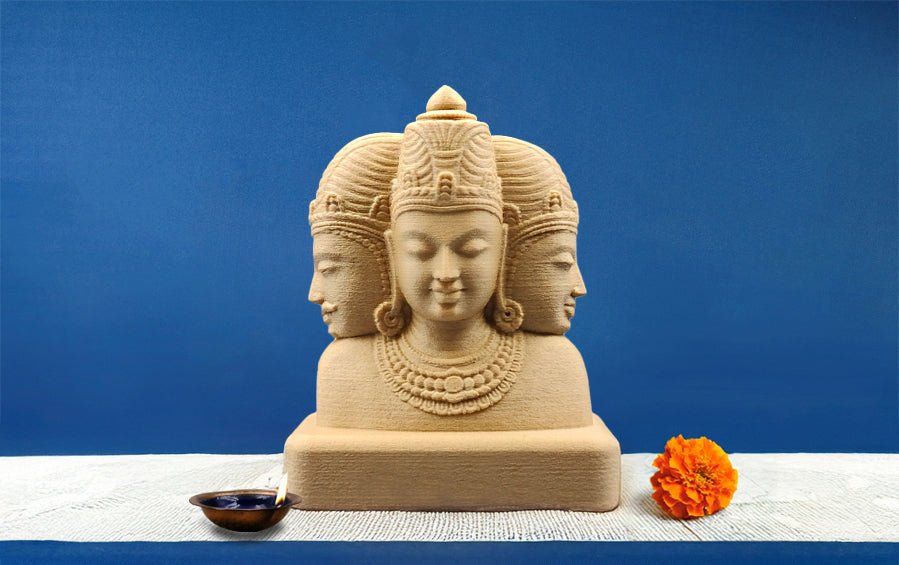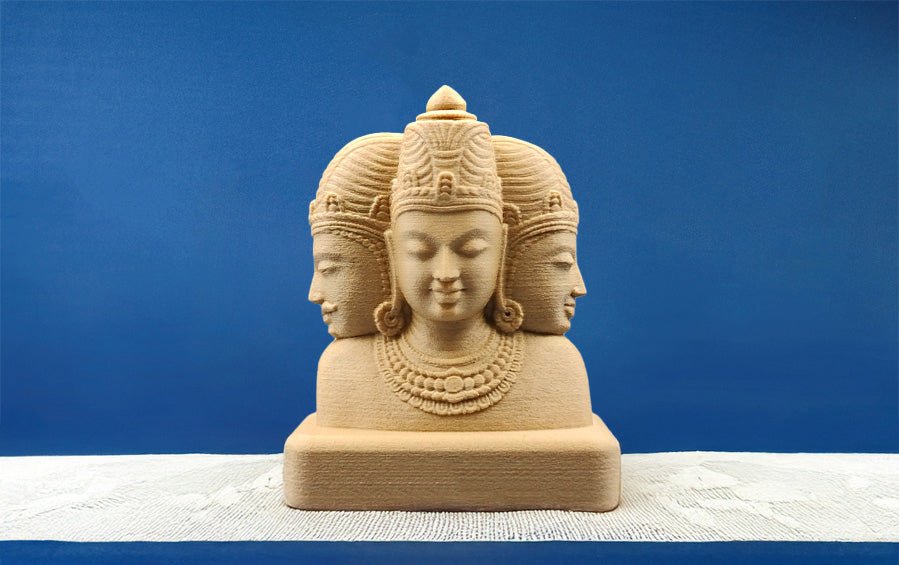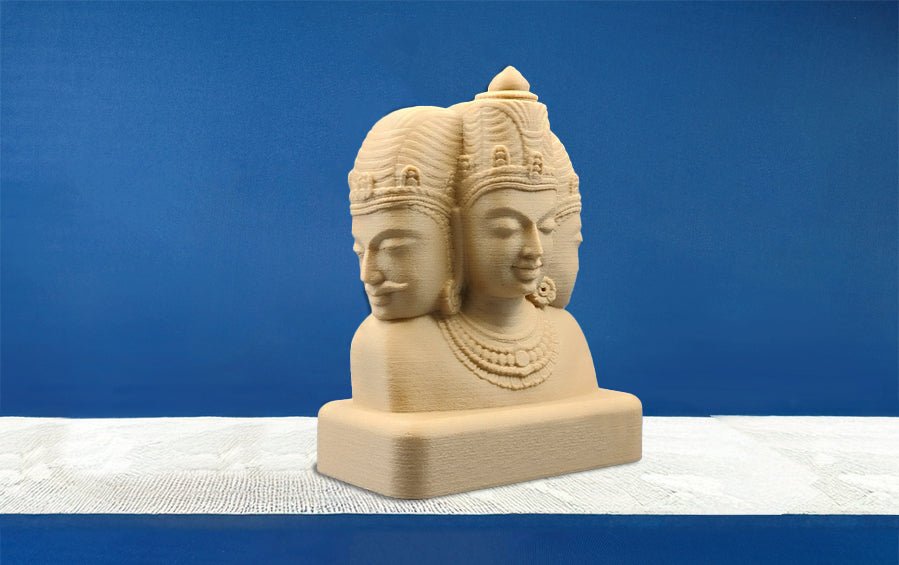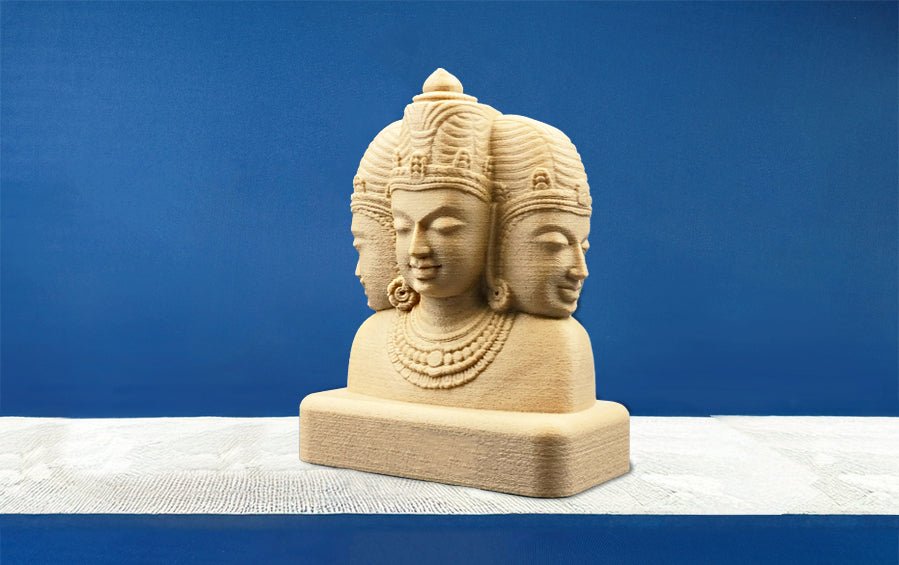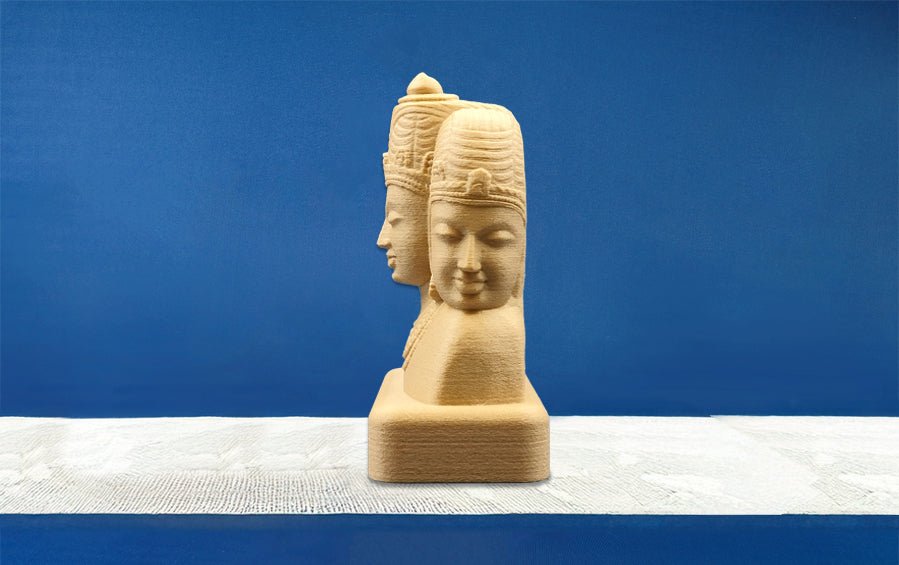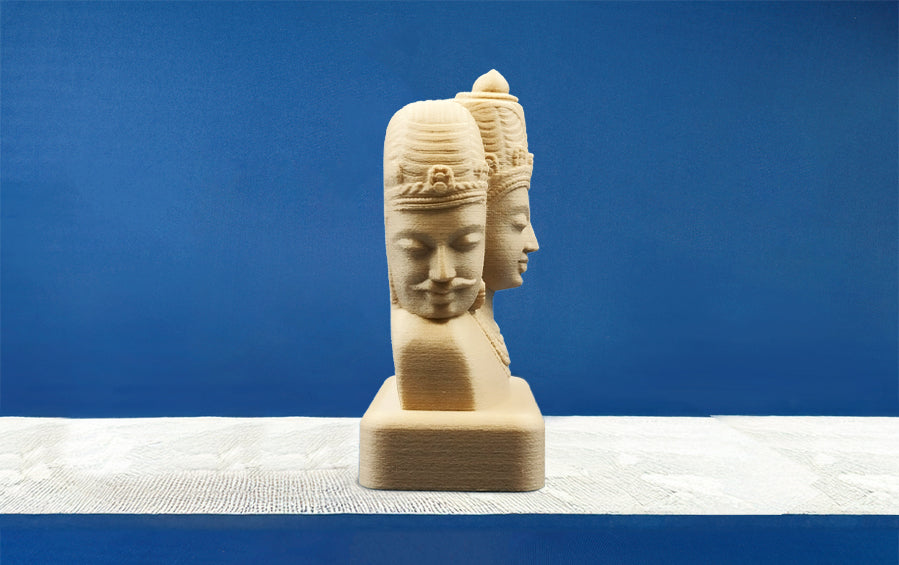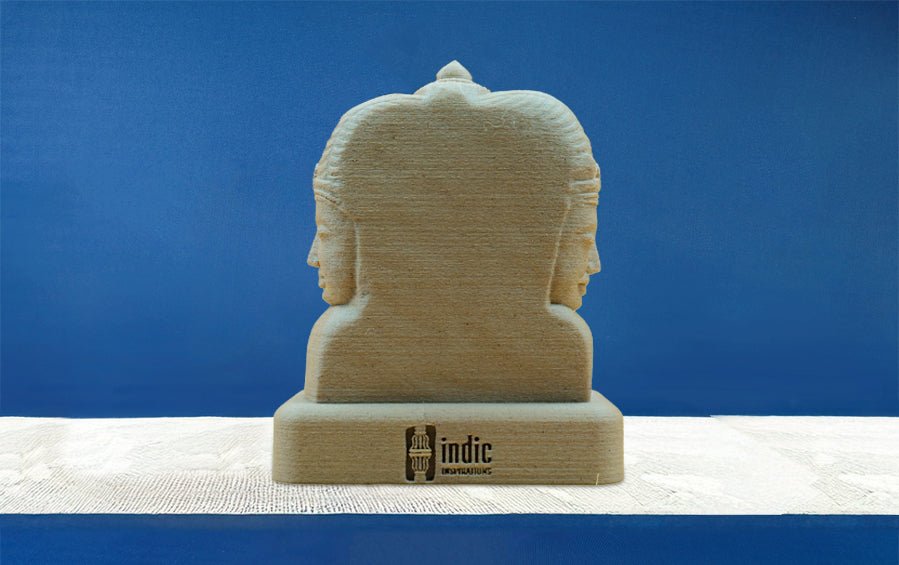Brahma-Vishnu-Mahesh | Trimurti | 5.5" H
The Timeless Essence of the Trimurti: A Cosmic Balance
At the heart of Hindu cosmology lies the Trimurti—Brahma, Vishnu, and Shiva—representing the fundamental cycles of existence: creation, preservation, and destruction. This divine triad embodies the interconnected nature of the universe, where one phase seamlessly transitions into another, ensuring cosmic equilibrium. The philosophical depth of the Trimurti has been expressed in various artistic and spiritual traditions, most notably in the figure of Dattatreya and the grand depiction of Shiva in the Elephanta Trimurti. The Elephanta Caves, home to the majestic Maheshmurti, offer a unique perspective on Shiva’s supremacy within this cosmic interplay.
The Trimurti and the Cosmic Process
Hindu philosophy conceptualizes the Trimurti—Brahma as the creator, Vishnu as the sustainer, and Shiva as the destroyer—governing the universe’s perpetual cycle. This representation aligns with the concept of Kala Chakra, the eternal wheel of time, where destruction leads to renewal, and existence moves in an unending rhythm. Beyond these individual roles, the Trimurti reflects Brahman, the ultimate reality that transcends all deities and symbolizes the eternal essence of life.
Dattatreya: The Living Trimurti
In later Hindu traditions, the Trimurti found human embodiment in Dattatreya, a sage depicted with three heads representing Brahma (knowledge and creation), Vishnu (sustenance), and Shiva (dissolution). Unlike the Elephanta Trimurti, which is purely Shaivite, Dattatreya integrates all three deities, symbolizing a unified spiritual path. This synthesis emphasizes the harmonious coexistence of these divine functions within the spiritual realm.
The Supremacy of Shiva in the Maheshmurti
While the broader Trimurti presents a balanced cosmic order, the Elephanta Trimurti, also known as Maheshmurti, focuses exclusively on Shiva’s threefold aspects—Aghora (fierce destruction), Tatpurusha (meditative preservation), and Vamadeva (benevolent creation). This portrayal elevates Shiva as the singular cosmic force within Shaivism, encompassing all universal functions and reinforcing his transcendental nature.
The Majesty of the Elephanta Trimurti
Carved into the living rock of the Elephanta Caves, a UNESCO World Heritage site, the awe-inspiring Sadashiva stands seven meters high, encapsulating the profound essence of creation, preservation, and destruction. Art historian Percy Brown described it as a “creation of genius,” while Jawaharlal Nehru, in The Discovery of India, likened it to India itself—an entity of immense power and contemplation, embodying timeless wisdom. The serene, half-closed eyes of the sculpture convey an eternal truth, subtly suggesting the impermanence of worldly existence.
Bringing the Trimurti to Life
Inspired by the grandeur of the Elephanta Trimurti, we embarked on a journey to create tangible representations of this iconic sculpture. Our process began with a deep respect for traditional craftsmanship. We partnered with skilled sculptors, including Pramod Kumar Maharana, from Raghurajpur, a heritage crafts village near Puri, Odisha, renowned for its rich history of stone carving. Following the ancient principles of Shilpashastra, these artisans meticulously hand-carved a stone replica of the Maheshmurti, capturing its intricate details with remarkable precision. This handcrafted masterpiece was then transformed using advanced 3D scanning technology into a precise digital model, which was further refined for 3D printing. This innovative blend of traditional artistry and modern technology has resulted in a collection of three exquisite scale models, all produced using FDM 3D printing: a 5.5-inch version in wood PLA and two models in stone PLA at 7.5 and 5.5 inches. These durable yet finely crafted pieces allow admirers to bring the spiritual and artistic legacy of the Elephanta Trimurti into their own homes.
A Lasting Legacy
The Elephanta Trimurti transcends its artistic magnificence to serve as a bridge between ancient and modern spiritual thought. As Sadashiva, it affirms Shaivite philosophy; as a conceptual framework, it unites diverse traditions. This timeless sculpture stands as a powerful reminder that creation, preservation, and destruction are but phases in the eternal cosmic flow, reinforcing the unbroken cycle of existence that governs all life.
